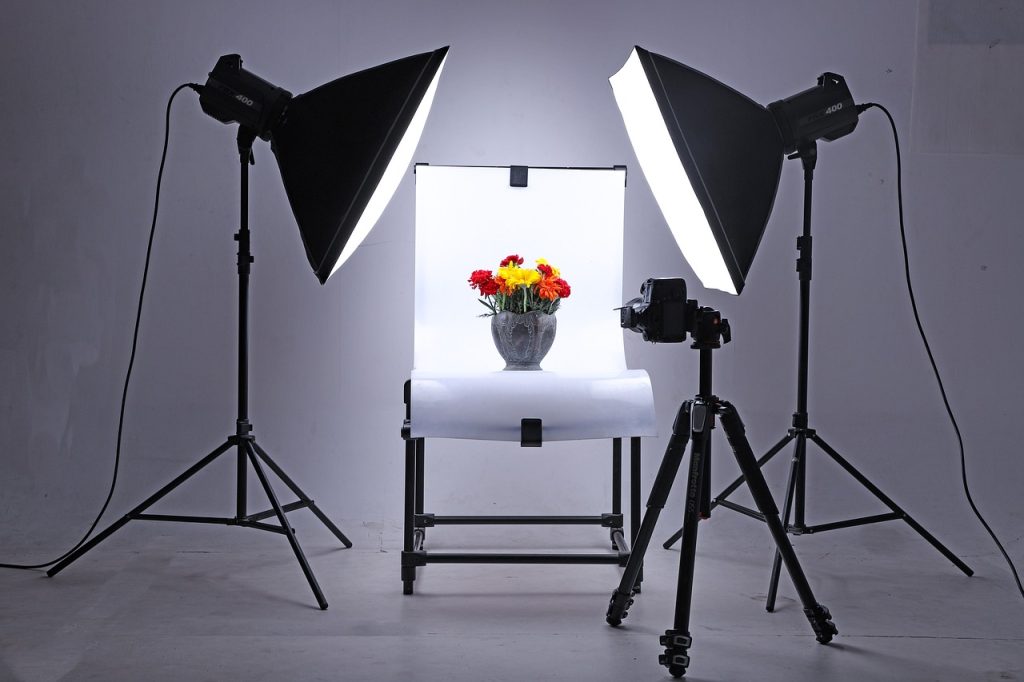Microstock photography once seemed like the perfect way to earn easy money with your camera. You could upload your photos to a photobank, sit back, and let the royalties roll in. It sounded like a dream job for photographers—but the reality today is far more complicated.
The world of microstock has changed dramatically. Photobanks now demand higher quality and originality than ever before, making it much harder for beginners to break in. Competition has exploded, with entire agencies churning out content to dominate the market. Earnings for individual contributors have dwindled, and success often requires both a specific niche and a steady stream of fresh uploads.
In this article, we’ll take a closer look at the current state of microstock photography. We’ll explore why it’s no longer the golden opportunity it once was, how to succeed despite the challenges, and whether it’s still worth your time and effort. If you’re thinking about diving into this world, read on to make an informed decision about your next steps.
1. The Harsh Reality of Microstock Photography
It’s easy to be drawn in by the promise of microstock photography—passive income, creative freedom, and the chance to monetize your hobby. But the industry today is far from the easy money-making venture it’s often portrayed as. Here’s a closer look at some of the challenges:
- Increased Competition: The microstock market is saturated with contributors. It’s no longer just individuals uploading vacation photos or hobbyist shots. Entire agencies with teams of photographers, designers, and editors now dominate the space, producing high volumes of polished, professional content. Competing against them can feel like an uphill battle, especially if you’re working solo from home.
- Higher Quality Standards: Photobanks have become much stricter about the content they accept. Images must meet exacting technical and aesthetic standards. Any issues with sharpness, lighting, composition, or originality can lead to rejection. This can be discouraging for newcomers who are still honing their craft.
- Diminished Earnings The payout per download has dropped significantly over the years. Where contributors once earned several dollars per image, many now earn mere cents per download. With royalties so low, you need a massive portfolio and consistent sales to make any meaningful income.
- Oversaturation of Generic Content Common themes like sunsets, coffee cups, or cityscapes are overrepresented in photobanks. Standing out in this crowded market means finding a unique angle or niche, which requires creativity and strategic planning.
- The Need for Consistency: Uploading a few photos and waiting for results won’t cut it. Success in microstock demands regular uploads to keep your portfolio fresh and maintain visibility on platforms. This can feel more like a grind than a passive income stream.
- The Shift to Free Platforms: Free stock photography websites like Unsplash and Pexels have grown in popularity, further driving down the demand for paid stock photos. While they provide exposure, they also make it harder to justify paying for content, especially for budget-conscious buyers.
For photographers, these realities can be a wake-up call. While it’s still possible to find success in microstock, the path is much narrower than it once was. Understanding these challenges upfront can help you decide if it’s the right avenue for your work or if your efforts are better spent elsewhere.
2. The Key to Success: Niches and Consistency
While the challenges of microstock photography are real, success is still possible if you approach it strategically. Two key factors—finding a niche and maintaining consistency—can significantly increase your chances of standing out and earning income in this competitive space.
The Power of Niches
In a market flooded with generic content, specializing in a niche can set you apart. Instead of submitting yet another coffee cup or sunset, focus on areas with high demand but less competition. Examples include:
- Medical and Healthcare: Authentic images of doctors, nurses, and patients.
- Technology and Innovation: Futuristic gadgets, coding setups, or AI-themed visuals.
- Sustainability: Renewable energy, eco-friendly products, or environmental activism.
- Business Diversity: Inclusive workplace scenes that reflect modern values.
By becoming an expert in your chosen niche, you can build a portfolio that attracts specific clients looking for exactly what you offer.
Consistency is Key
Success in microstock isn’t about uploading a few dozen images and hoping for the best. To stay visible and relevant, you need to upload new content regularly. This keeps your portfolio active and ensures you’re contributing fresh material that aligns with current trends.
- Set realistic goals for how many images or videos you want to upload each week or month.
- Stay updated on market trends to create content that resonates with buyers.
- Use analytics from photobanks to track which images perform well and adjust your strategy accordingly.
Balancing Passion and Strategy
To sustain the grind of microstock photography, you need to enjoy the process. Find ways to blend your personal interests with market demands. For example, if you love nature photography, focus on unique environmental themes like endangered species or conservation efforts.
Combining a passion for your craft with a smart approach to niches and consistency can make all the difference in your microstock journey. It’s not an easy path, but with the right mindset, it can still be rewarding.
3. Top Five High-Profile Photobanks
If you’re ready to step into the world of microstock photography, the first step is choosing the right platform. While there are many photobanks out there, five stand out as leaders in the industry. Here’s a quick overview of each and what you need to know to get started:
1. Shutterstock
- Overview: One of the largest and most popular photobanks, Shutterstock is known for its diverse collection and massive customer base.
- How to Join: Submit an application with 10 of your best images for review. Ensure they meet their strict quality standards.
- What to Focus On: Business-themed images, unique lifestyle shots, and concepts that stand out visually.
- What to Avoid: Overdone themes like generic sunsets or clichéd stock concepts.
2. Adobe Stock
- Overview: Linked to Adobe’s Creative Cloud suite, Adobe Stock attracts a professional audience of designers and creatives.
- How to Join: Sign up for free, upload your work, and wait for approval.
- What to Focus On: High-quality, modern visuals that fit professional design needs, such as clean backgrounds and sharp details.
- What to Avoid: Low-resolution images or ones with distracting elements.
3. iStock (by Getty Images)
- Overview: A premium platform owned by Getty Images, iStock offers both affordable and exclusive content tiers.
- How to Join: Pass an application process that includes submitting sample images.
- What to Focus On: Exclusive, high-value content that can command premium pricing.
- What to Avoid: Low-effort or overly generic images that don’t stand out.
4. Alamy
- Overview: Known for its higher payouts and less restrictive contributor guidelines, Alamy is a favorite among many photographers.
- How to Join: Create an account, upload high-quality samples, and start selling after approval.
- What to Focus On: Editorial content, cultural events, and unique travel photography.
- What to Avoid: Poorly keyworded images, as Alamy relies heavily on searchability.
5. Getty Images
- Overview: A top-tier photobank known for premium, exclusive content.
- How to Join: Apply to become a contributor by submitting your portfolio and passing a review process.
- What to Focus On: Unique, high-production-value imagery that caters to a professional audience.
- What to Avoid: Overused themes or images that lack originality.
Choosing the right platform depends on your style, niche, and commitment level. These top photobanks are competitive but offer the most potential for photographers who are serious about succeeding in the microstock industry.
4. Other Photobanks to Consider
Not every photographer will feel ready or able to join the top-tier photobanks, and that’s perfectly fine. There are plenty of other platforms that cater to beginners, hobbyists, or those looking for a less competitive environment. Here are a few to explore:
1. Dreamstime
- Overview: A beginner-friendly platform with relatively relaxed submission standards.
- Why Consider It: Dreamstime is a great place to start if you’re new to microstock photography and want to gain experience.
- Tips: Focus on well-lit, clear, and relevant images to increase acceptance rates.
2. 123RF
- Overview: Another beginner-friendly platform with a growing customer base.
- Why Consider It: 123RF offers fair commissions and a straightforward submission process.
- Tips: Pay attention to trending topics and create content that aligns with current demand.
3. Free Stock Platforms (e.g., Unsplash, Pexels)
- Overview: These platforms allow photographers to share their work for free, often in exchange for exposure or small donations.
- Why Consider It: While you won’t earn direct royalties, free platforms can help you build a following and showcase your work to a wide audience.
- Tips: Include links to your portfolio or social media accounts to encourage clients to reach out for paid projects.
4. Depositphotos
- Overview: A mid-tier photobank with reasonable standards and a decent payout structure.
- Why Consider It: Depositphotos strikes a balance between accessibility and profitability.
- Tips: Build a diverse portfolio to appeal to a broader audience.
5. Canva Contributors
- Overview: Canva allows photographers and illustrators to contribute content that’s used by its vast user base for design projects.
- Why Consider It: Canva’s massive popularity makes it a great way to gain visibility and consistent downloads.
- Tips: Focus on high-quality visuals that work well in templates, such as clean backgrounds and versatile images.
Exploring these alternative platforms can help you find a space
Is Microstock Photography Worth It Today?
If you’re asking whether microstock photography is worth it in today’s market, the honest answer is: probably not—at least not for most photographers. The industry has changed so much that it’s no longer the easy, profitable venture it once seemed to be. Here’s why:
The Numbers Don’t Add Up
Royalties have decreased significantly over the years. You’re often earning mere cents per download, which means that even a decent-sized portfolio might only generate modest monthly income. For many, the time and effort required to produce and upload high-quality, competitive content simply doesn’t justify the return.
Competition is Fierce
You’re not just competing with hobbyist photographers anymore. Entire agencies with teams of professionals now dominate the market. These agencies have the resources to produce content at a scale and quality that’s hard for individual contributors to match.
Oversaturation is Real
The sheer volume of content already available on photobanks makes it difficult for new contributors to stand out. Common themes are overrepresented, and niche markets are becoming increasingly crowded as well.
The Rise of Free Platforms
With the popularity of free stock websites like Unsplash and Pexels, many potential buyers now opt for free alternatives over paid photobanks. This trend has further eroded earnings for contributors to traditional platforms.
When It Might Still Be Worth It
Despite these challenges, there are scenarios where microstock photography could still make sense:
- You’re Passionate About It: If you genuinely enjoy creating stock content and see it as a creative outlet, the financial aspect might be secondary. In this case, the modest income can feel like a bonus.
- You Have a Unique Niche: If you specialize in a niche with steady demand and low competition, you might find more success.
- You Use It as a Side Hustle: For those who already have a full-time job or other sources of income, microstock can be a supplementary way to monetize existing work or hobby projects.
Ultimately, microstock photography isn’t the golden ticket it once was. For newcomers especially, the industry presents more challenges than opportunities. That said, for those with realistic expectations, a strong niche, and a genuine love for the craft, it can still be a worthwhile endeavor—just don’t expect it to replace a full-time income.
Want the full in-depth (and slightly discouraging) guide about Stock Photography? Get it here




